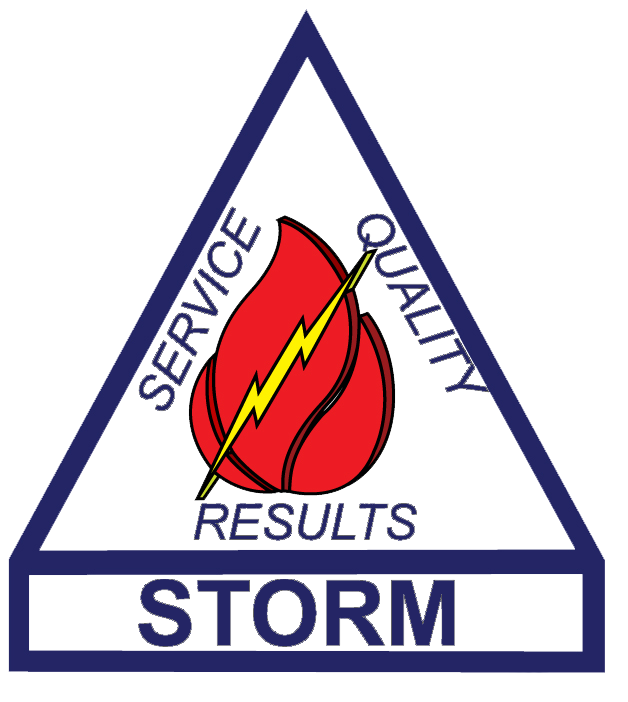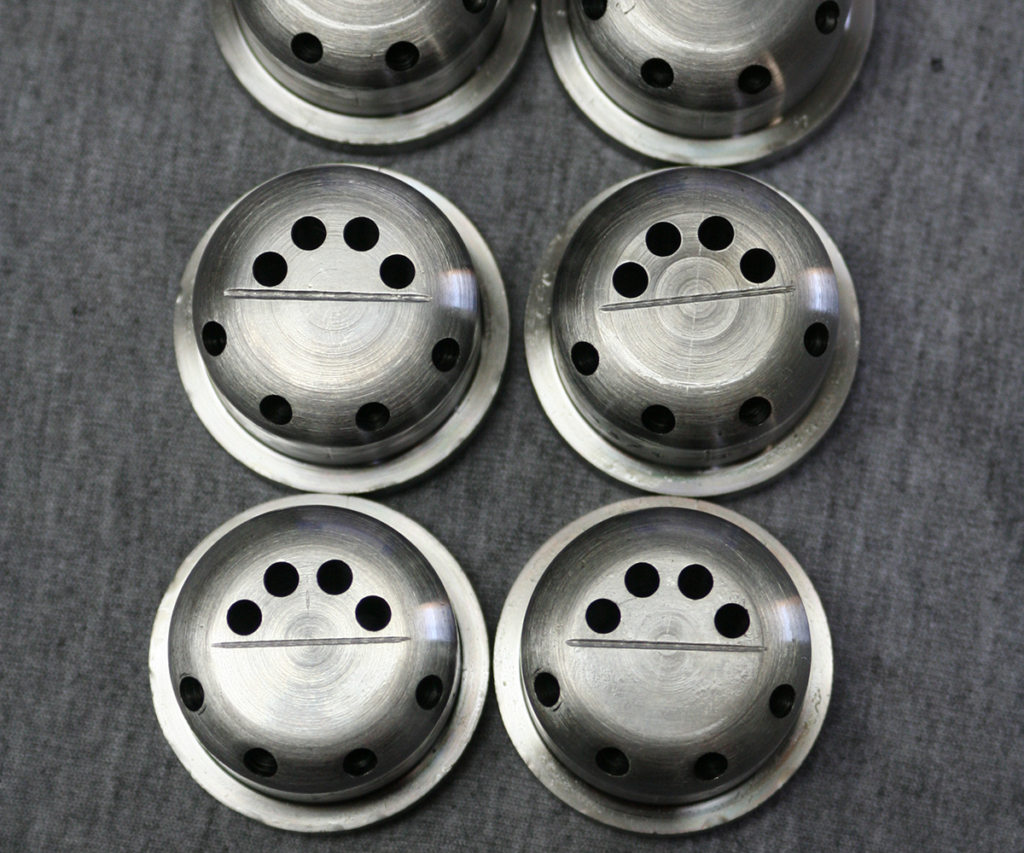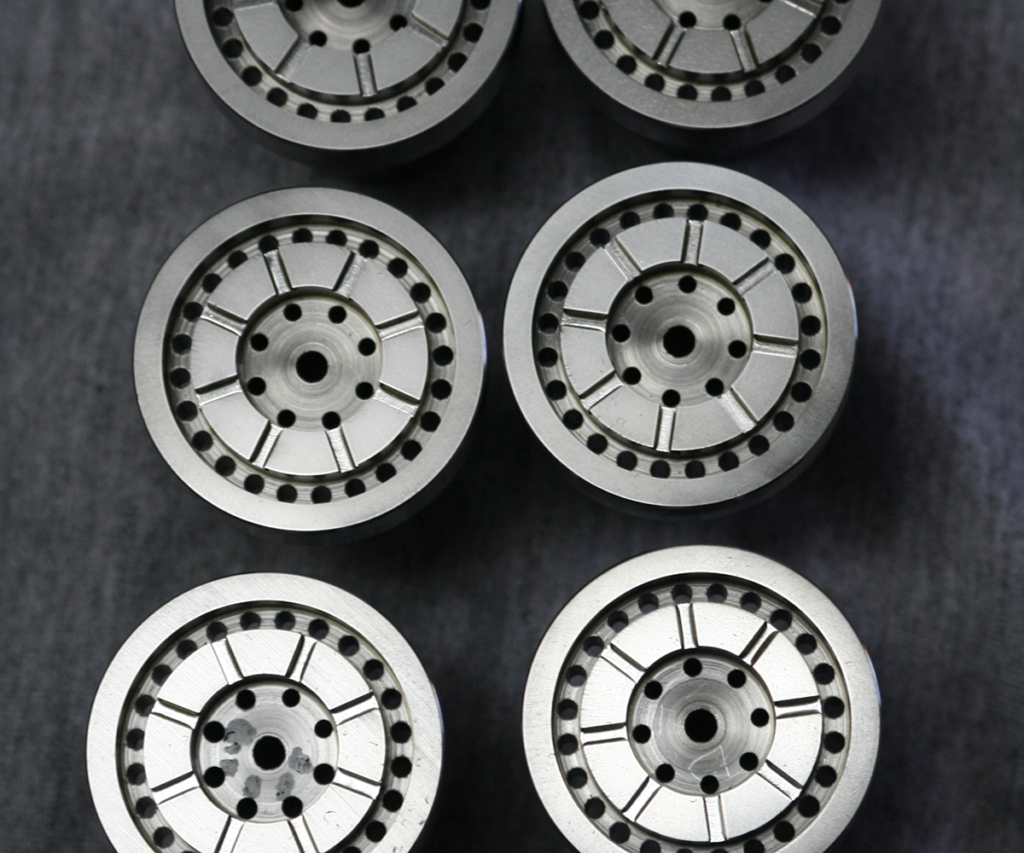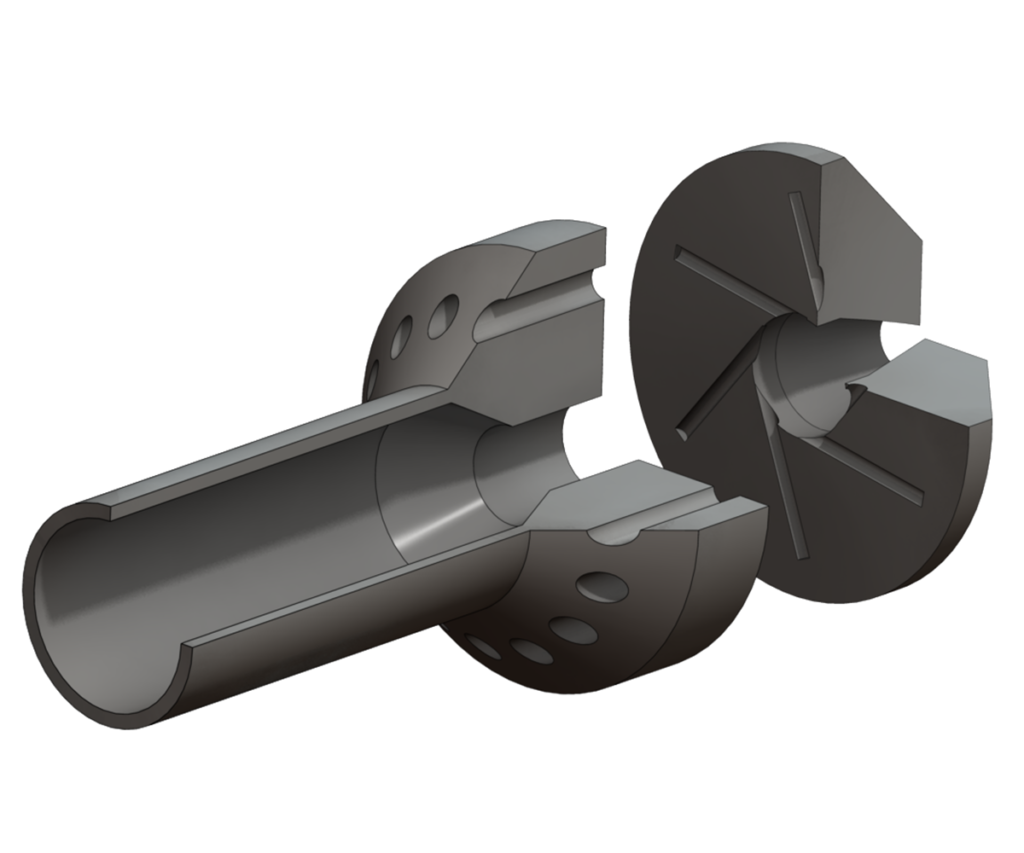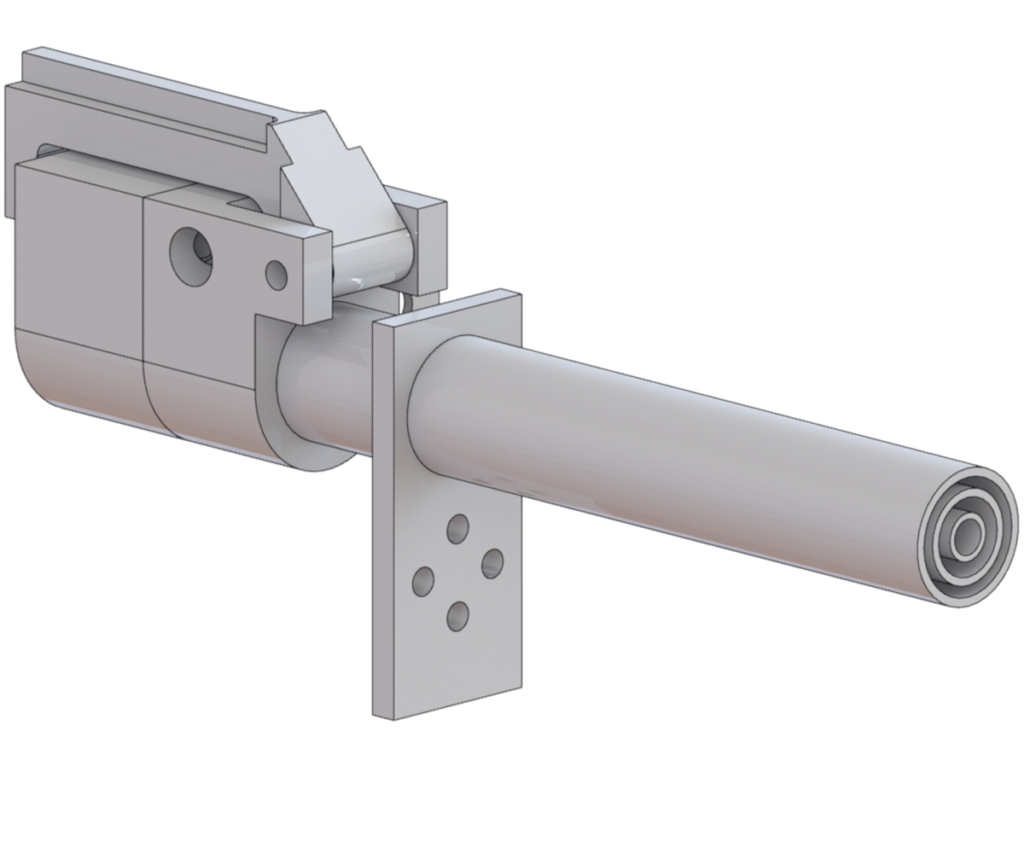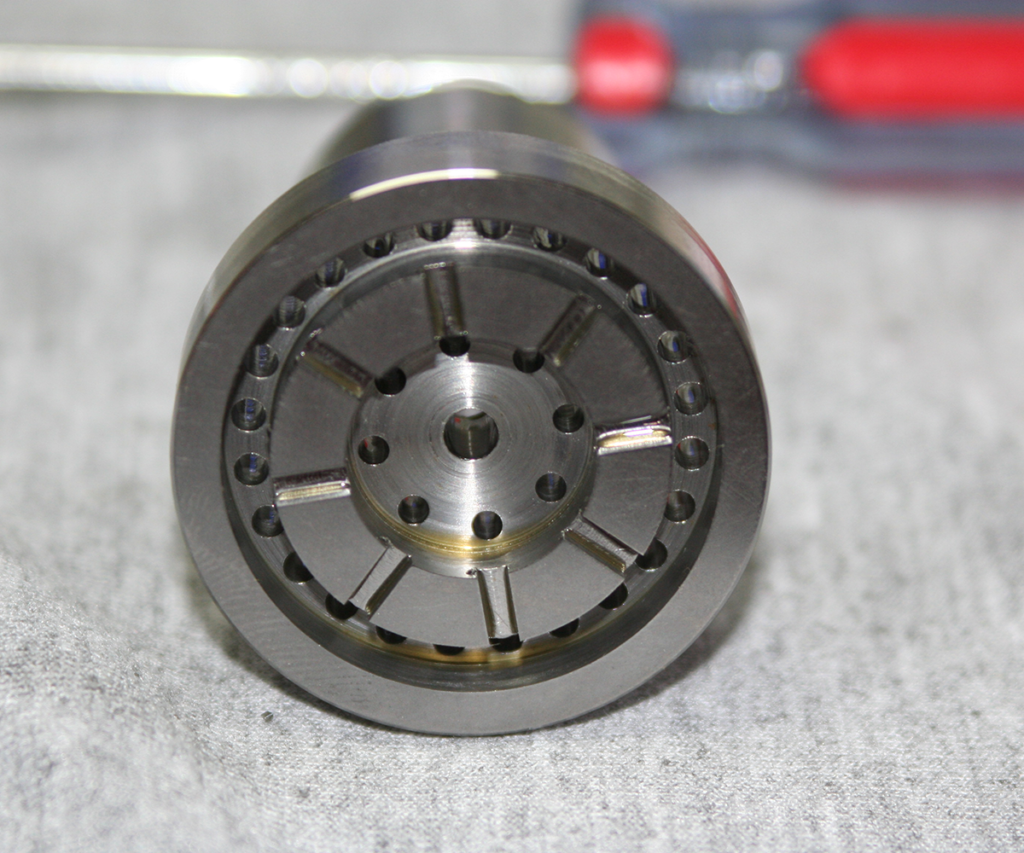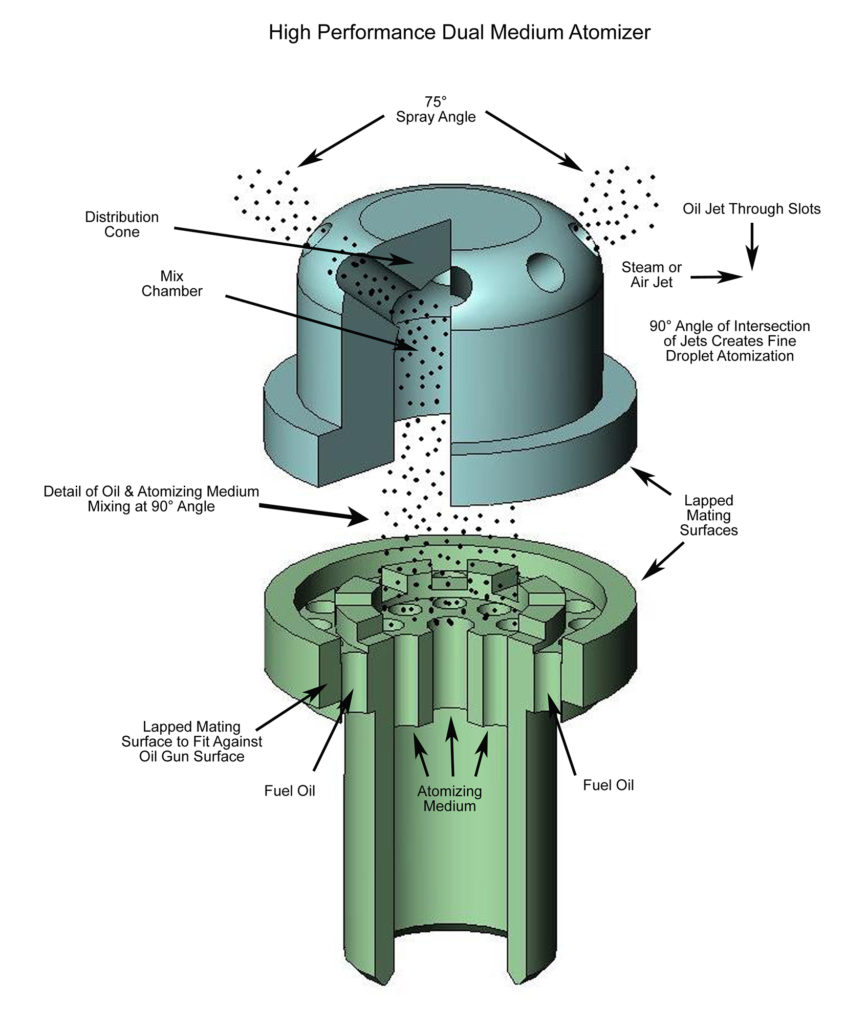Oil Fired Combustion Components
Pulverized coal is not the only fuel medium STORM® specializes in. We also manufacture components for boilers that fire oil.
Industrial steam generators commonly utilize heavy residual oil as the primary fuel. Combustion optimization when firing residual fuel oil is important to control stack particulate emissions, boiler gas flow path fouling, as well as superheater and waterwall temperatures. STORM® utilizes a practical approach consisting of the following points, the majority of which are found in our 13 Essentials of optimum combustion.
- Proper Burner Throat Velocity
- Combustion Airflow Balancing
- Maintaining Critical Burner Tolerances
- Atomizer Optimization
- Installation of Swirlers or Diffusers
It has been our experience to utilize the high performance, dual-media atomizers for the majority of combustion optimization. The second choice has been the more economical, less atomizing medium consumption of a steam or air assist type atomizer. A third, less appealing option is mechanical atomizers.
The pictures to the right show the first choice, high performance, dual-media atomizers. The key to optimizing performance is to modify the atomizers, tip spray angle, and burner components to match the furnace and site-specific requirements.
The achievement of optimum combustion on boilers equipped with more than one burner requires some attention to balancing the airflows. Usually, on boilers with up to six burners, burner throat reductions, the addition of swirler type diffusers, and burner shrouds will contribute to enough balancing that windbox turning vanes or balancing dampers are not required.
The environmental requirements of reduced stack opacity and NOx make each application unit specific. The changes to burners and atomizers are based on field testing and observations.
